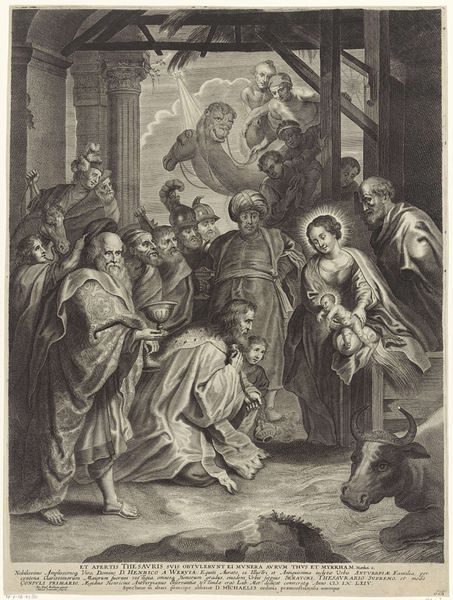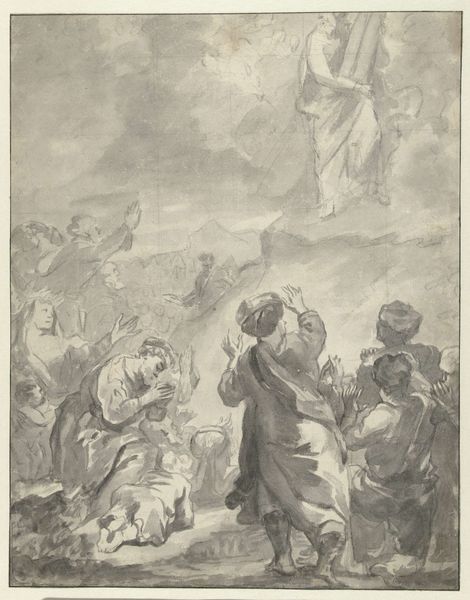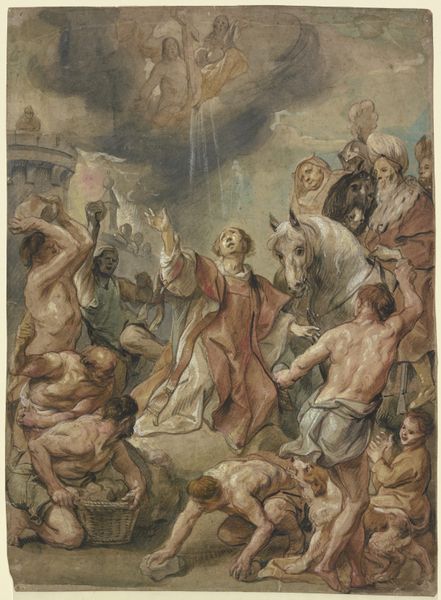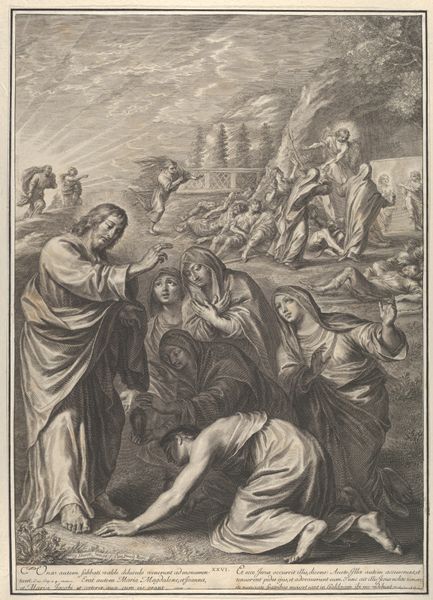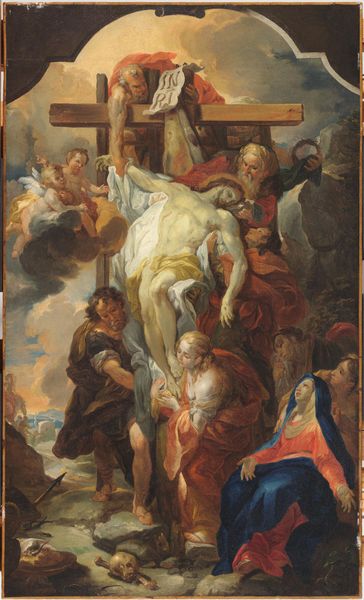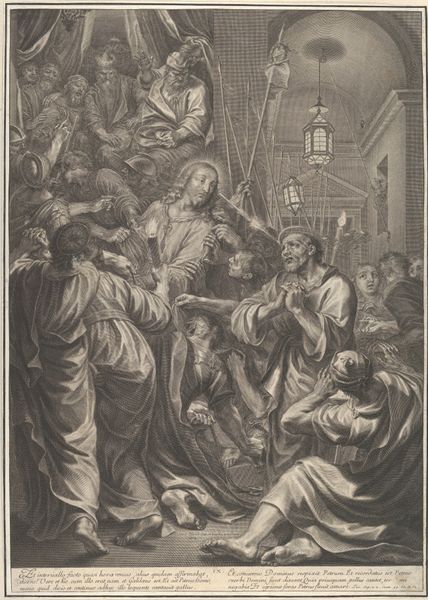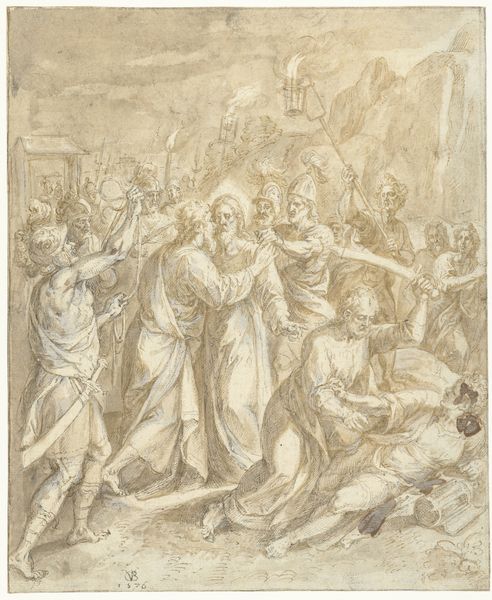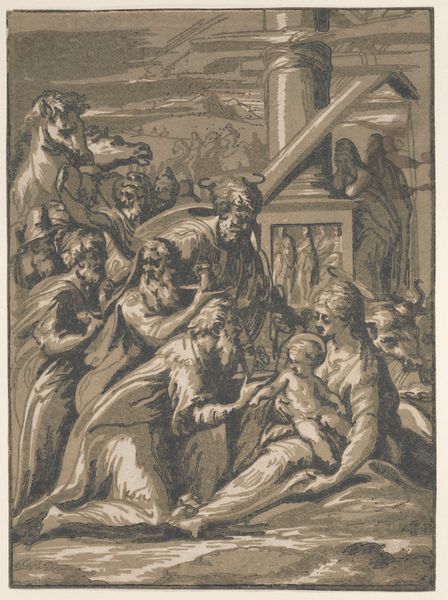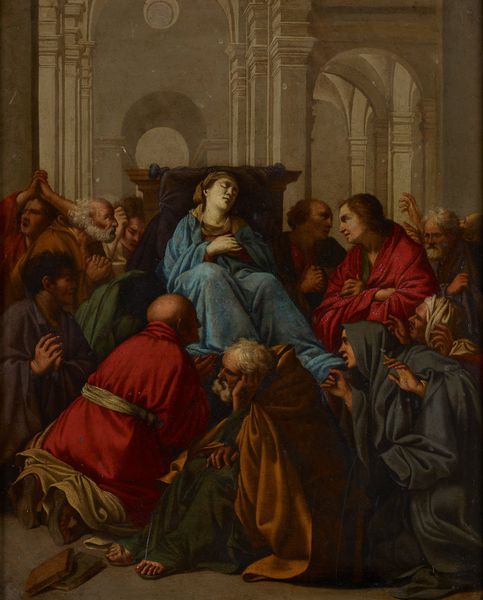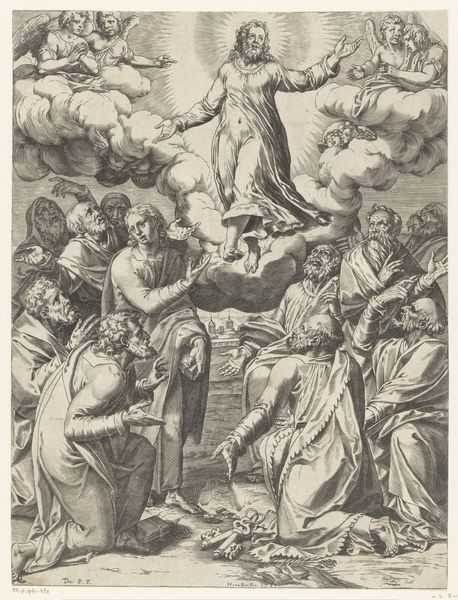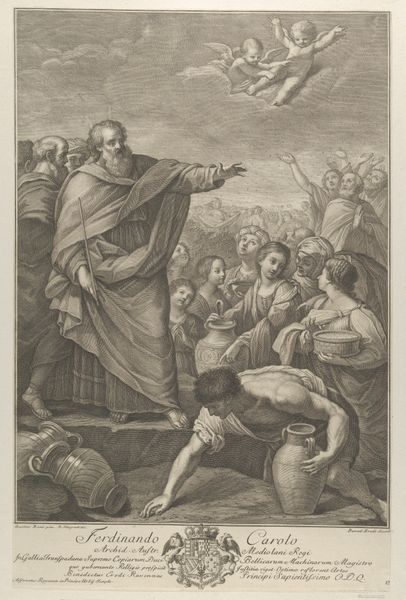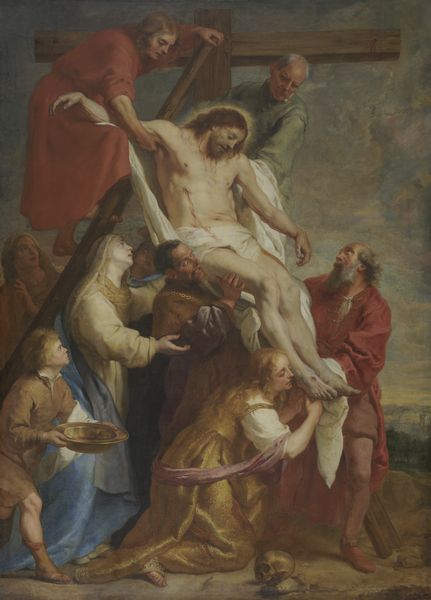
drawing, watercolor, ink
#
drawing
#
charcoal drawing
#
figuration
#
watercolor
#
ink
#
history-painting
#
academic-art
Dimensions: overall: 49.8 x 25.7 cm (19 5/8 x 10 1/8 in.)
Copyright: National Gallery of Art: CC0 1.0
Curator: Before us, we have an artwork titled "Christ with Apostles and a Roman Soldier" by Ernest Zacharias Platner, executed using a blend of ink, watercolor, and charcoal. Editor: The composition immediately strikes me. There's a sense of dramatic tension, a stillness before the storm perhaps, accentuated by the ethereal figures hovering above. It feels like we're witnessing a pivotal moment. Curator: That's an excellent observation. Placing this piece within the academic art tradition reveals the artist's aspiration to imbue the historical narrative with moral significance, possibly commenting on power dynamics of the era. Consider, how are marginalized identities portrayed or overlooked within this depiction? Editor: Interesting, and what do you make of the angels hovering above? They lack individual characteristics and are seemingly watching what's playing out below, and are seemingly placed right above the castle which might suggest some larger scheme unfolding, perhaps some divine acceptance or dismissal of authority? Curator: Absolutely. The placement and their detached gazes might speak to the way those in positions of power have often claimed divine sanction. They function less as sympathetic observers, perhaps, and more as symbolic confirmations. Think about whose perspectives are truly valued in scenes of supposed historical importance. Editor: This reading deepens my understanding. At first glance, the soldier might embody a universal symbol of dominance, but with your insight, I begin to discern the subtleties, the challenges inherent in deciphering power when viewed through art. The watermarks give a certain haziness to the art. It adds mystery. Curator: Indeed, it is vital to question the motives behind such renderings and whom they primarily serve. It's the questions they provoke about religious zealotry that makes the piece significant, especially as the narratives about violence and peace often omit the perspectives of the marginalized. Editor: Reflecting on our discussion, this piece serves as more than just a historical illustration. It is indeed a mirror reflecting ongoing battles for control, urging critical examination, a thought that resonates powerfully. Curator: Yes, engaging with artworks like this demands that we continuously question whose histories are being celebrated, at whose expense, and what lasting messages they are sending into the world.
Comments
No comments
Be the first to comment and join the conversation on the ultimate creative platform.

